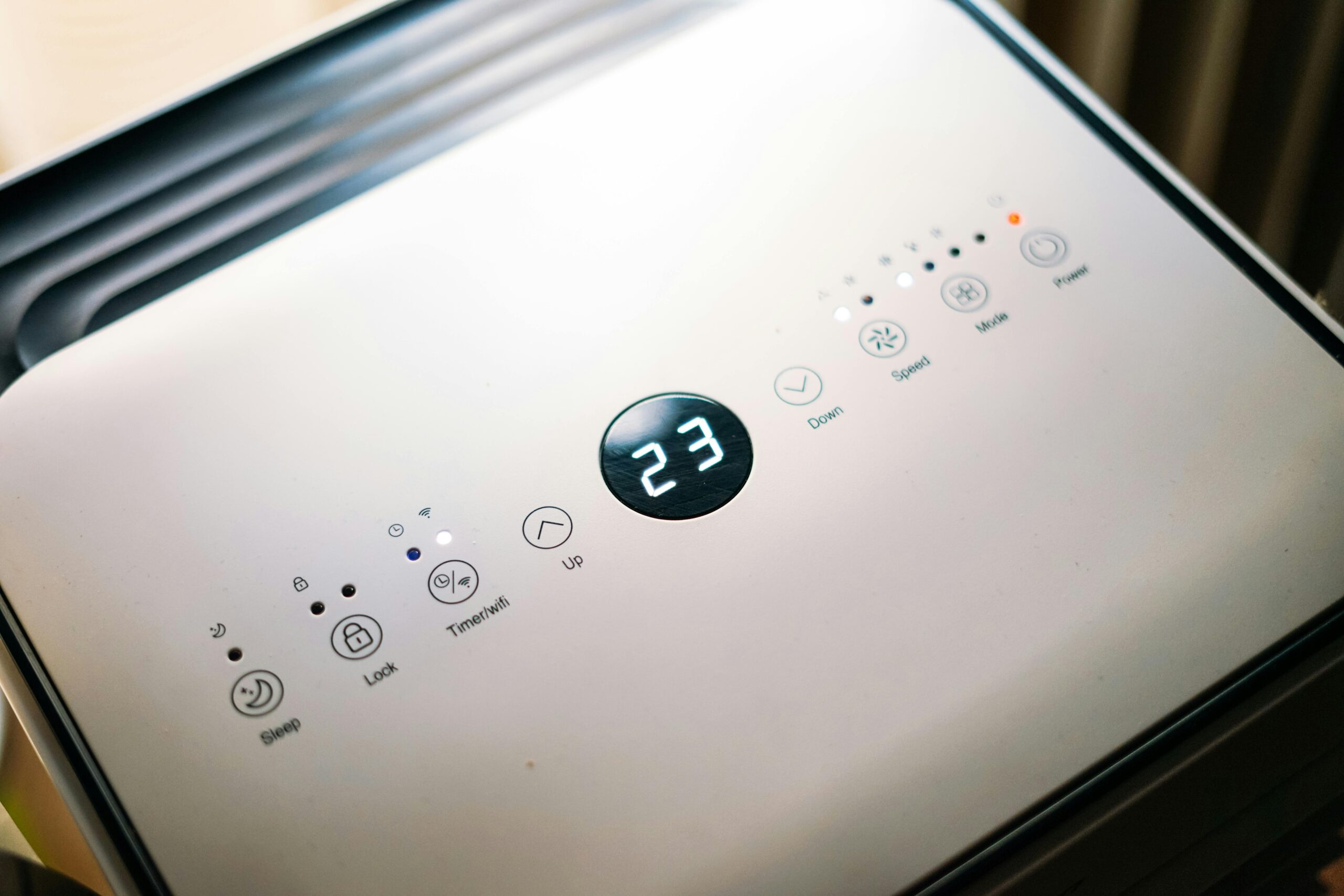You can’t add a metre to your floor plan today, but you can make your home feel roomier, simply by tuning comfort. Space perception is sneaky. It’s shaped by temperature swings, airflow, humidity, light, and noise. Get those right, and a studio starts acting like a one-bed. This playbook shows you how to dial in “micro-comfort” so every corner pulls its weight.
Start With Air, Not Square Metres
Most cramped rooms share the same culprits: stale air, hot-and-cold zones, and fans that howl like hairdryers. Fixing this isn’t about buying a bigger sofa or a smaller table. It’s about smoothing the air journey through your home. Even in a compact flat, you want movement without drafts, quiet without stagnation, and warmth without stuffiness.
Your goal: steady conditions, low noise, balanced airflow.
The Micro-Comfort Framework (use this to troubleshoot)
- Heat:Keep room-to-room temperature differences under 2–3°C.
- Airflow:Move air gently; avoid jets blasting onto seating.
- Humidity:Aim for 40–50% relative humidity; below feels sharp, above feels muggy.
- Noise:If you have to raise your voice, comfort drops—so does the “spacious” feeling.
- Light:Natural light plus a clear supply/return path makes rooms feel open.
Airflow Tricks That Act Like Extra Space
- Create a return path.If you have a door-closed bedroom and no return grille, undercut the door by ~10–15 mm so air can get back to the hallway.
- Lift supply air.Angle or relocate vents so air “washes” the ceiling and falls gently, not straight onto the couch.
- Use the fan smarter.In summer, run ceiling fans downward on low; in winter, reverse them to pull air up and mix it without a chill.
Zoning That Doesn’t Fight Your Layout
Open plan living, lofts, and split-level spaces are notorious for being toasty in one zone and chilly in another. A good fix is zoning—not just with doors, but with equipment that can target areas precisely. That’s where a ductless mini-split shines: it lets you dial comfort exactly where you’re sitting—office nook, sleeping loft, or sunroom, without tearing into walls or over-conditioning the whole home.
Humidity: the Invisible Square Metre
Get humidity wrong and even a minimalist room feels heavy. Get it right and everything “lifts.”
- Bathroom:Use a 20 – 30 minute timer on the extractor after showers.
- Kitchen:Vent to the outside when you cook; lids and low-simmer matter more than you think.
- Plants & fabrics:Dense textiles and dozens of plants can trap moisture—keep balance with occasional cross-venting.
Quiet is a Design Feature
Noise shrinks rooms. A few low-effort upgrades:
- Isolate vibration.Add anti-vibration pads under portable units and appliances.
- Seal the little leaks.A whistling door sweep or rattling register realigns the whole soundscape.
- Service equals silence.Dirty filters, sludgy condensate lines, and tired fan bearings make systems shout.
Smart Control, Small-Home Style
You don’t need a wall of gadgets. You need scenes:
- Wake:Pre-warm or pre-cool the living area before you leave the bedroom.
- Work:Keep a steady setpoint and gentle fan to avoid afternoon slump.
- Wind-down:Drop noise and airflow after 8 pm; prioritize the bedroom zone.
Set alerts for filter changes and seasonal mode swaps so you stay ahead of spikes and surprise bills.
Fabric, Furniture, and Flow
Comfort is more than equipment:
- Low-back seating, open legs.Air moves underneath, reducing cold ankles and stagnant pockets.
- Layered textiles.A breathable throw plus a thin rug can be more comfortable (and easier to clean) than one heavy shag.
- Window discipline.Layer blinds with lightweight curtains; you’ll soften heat gain without living in the dark.
Five-Minute Fixes vs. Weekend Wins
This Week (5–10 minutes each):
- Flip your ceiling fan direction for the season.
- Vacuum returns and replaces any grimy filters.
- Nudge setpoints smaller (1 – 2°C tighter band) to cut swings.
This Month (one afternoon each):
- Add a door undercut or jumper duct to a closed-door room.
- Put bathroom and kitchen fans on timers.
- Re-aim or swap a register deflector to bathe the ceiling.
This Season – Plan Ahead
- Book a servicebefore the first heatwave or cold snap. It’s calmer (and cheaper) than an emergency call-out.
- Check your humidity.If the monitor sits above 55%, add a small dehumidifier to lighten the air and help your system work less.
- Zone what you actually use.If you spend most of your time in the living room and bedroom, target those areas instead of conditioning the whole home.
The Takeaway
You don’t need a gut renovation to make a small place feel generous. Smooth the airflow, quiet the noise, and keep humidity in the sweet spot. Put a few simple routines on autopilot—filter reminders, seasonal checks, gentle fan schedules—so comfort ticks along without you babysitting the thermostat. Do that and you’ll feel it the moment you walk in: steadier temps, softer sound, more calm—in the exact same square metres.

